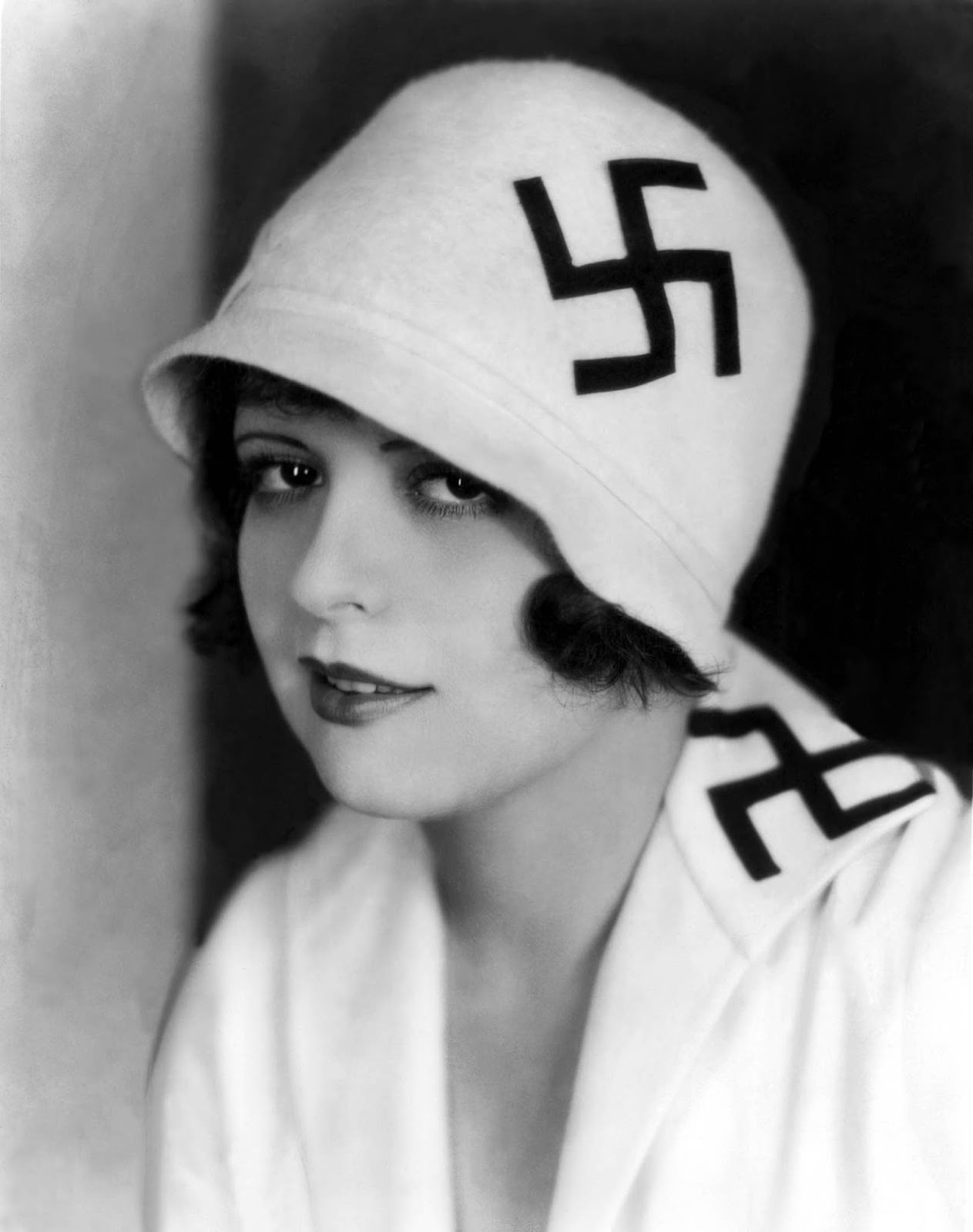The realm of Hollywood in the early 20th century was a vortex of glitz and glamour, charisma, and controversy. A particular storm in this exciting era revolved around Clara Bow, the iconic ‘It Girl’ of the silent film period. One image sparked a maelstrom of its own. It depicted Clara, dressed with her usual panache, but with one startling element – her top was emblazoned with swastikas. This striking photograph was taken in 1932, years before the atrocities of World War II were unleashed upon the world.
Clara Bow, born in 1905, was the embodiment of the flapper era, renowned for her vivacious screen presence and the lively charisma she brought to her roles. She became the epitome of the ‘Roaring Twenties,’ her life mimicking the ebullience of the age. However, beneath this shimmering persona, Clara was a woman of depth and complexity, often at odds with her cheerful on-screen persona.

The image in question was taken at the height of Clara’s fame. She sported a stylish cloche hat, a staple of 1920s and early ’30s fashion, while her top was adorned with a pattern of swastikas. The swastika, which would become a symbol of hatred and oppression, was, at this point, widely recognized as an ancient symbol, conveying luck and well-being.
The portrait of Clara Bow was captured by Eugene Robert Richee, a famed Paramount photographer. His talent for encapsulating the personality and vibrancy of his subjects was unparalleled. This photograph showcases his ability to capture not only the allure of Clara Bow but also the zeitgeist of the period, albeit unintentionally foreseeing the ominous turn the symbol of swastika would soon take.
To understand the appearance of swastikas in Clara’s attire, we must journey back into the history of the swastika symbol itself. Long before it was tainted by Nazi appropriation, the swastika was recognized in numerous cultures globally, from ancient India to Native American tribes. The word swastika comes from the Sanskrit ‘svastika,’ translating to ‘good fortune’ or ‘well-being.’ It was often used in designs or as a charm for luck.
By the 1920s, the symbol had become somewhat trendy in the West. It appeared in advertisements, on postcards, and as part of clothing designs. It was a symbol of luck, prosperity, and was particularly associated with good fortune in flying, an activity that was just starting to capture public imagination and Clara’s own interest. Therefore, seeing the swastika on a fashionable blouse in 1932 would not have been viewed as offensive or politically charged as it would be post-World War II.
At the time Clara wore the hat and top adorned with swastikas, the Nazi Party was still considered a fringe political group in Germany. It wasn’t until 1933, a year after this photograph was taken, that Adolf Hitler ascended to power. His rise led to the transformation of the swastika into a symbol of the Aryan race, and subsequently, a symbol of terror and hate. The heinous atrocities associated with the swastika today were unimaginable to the world when the photograph was taken in 1932.


